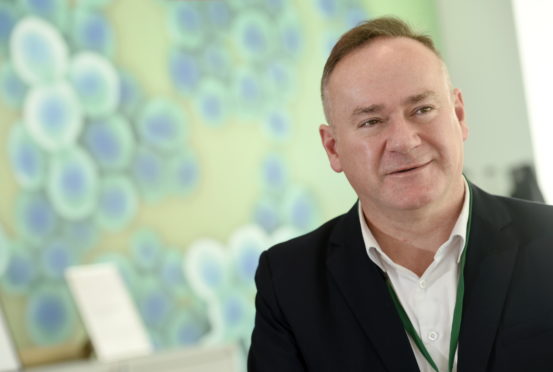A company which specialises in antibiotic resistance detection is carrying out global research from Inverness as it seeks to minimise the incorrect treatment of urinary tract infections.
ODx, based at the £4.5million Solasta House facility at Inverness Campus, is striving to reduce detection time from the current three-day turnaround to just one hour.
The firm opened their new facility and laboratory to The Press and Journal yesterday as they strive to deliver radical changes to sufferers of UTIs across the globe.
The infections are a growing cause of death and can develop into the more serious condition of urosepsis if treatment isn’t timely or effective.
Globally, more than 1.6million people die every year from UTIs with an estimated 150 million contracting the condition.
Inverness has beaten off stiff opposition from other locations around the globe, including Oxford, Cambridge, France and the United States, to host the new work.
The firm, which has been in residence in the Highland capital since August, has developed its workforce in that time from one to the current 32 based at Solasta.
ODx is working on technology which will create a machine to allow for testing of urine samples to take place in-house and plans to install cost-saving machinery in place at GP practices in rural and island communities to reduce journey and diagnosis times.
It is hoped the development of the technology will have a knock-on effect in allowing patients quicker access to treatment.
Giles Hamilton, the company’s chief executive, said the firm was “passionate about trying to solve the problem of urinary tract infections and antimicrobial resistance (AMR) more generally”.
He added: “What we are trying to do is help healthcare professionals get an answer to the question, ‘have you got an infection or not’ first of all, and secondly, ‘if you have, what can we do about it?’.
“We can then establish if they need a drug and work towards getting the right drug. Right now, that process takes three days – we reckon we can get it done in an hour.
“We have invented a technology that allows us to look at any biological sample. We are choosing urine first because it is such a big clinical problem.”
Mr Hamilton confirmed the firm uses a friendly process to kill off bugs and ensure that no pollution leading to possible infection can occur.
He added: “The fact is people are dying of this and the figure is growing.
“About 150 million people a year globally get UTIs and the AMR threat, which is coming from the O’Neil report by the UK Government, suggests if something is not done about it, there are going to be 10 million deaths per year by 2050.”
